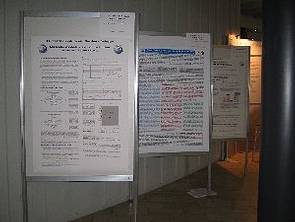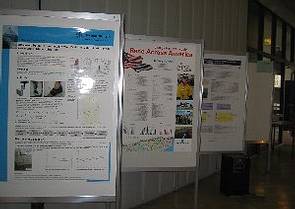and sports applications
Lochaeckerstrasse 18, CH-8302 Kloten, Switzerland. Phone: +41 44 803 06 30, Mail: [email protected]
The 2004 State-of-the-Art Session was about the topic "Muscle imbalances - fact or fiction?". The results of that session are published:
Isokinetics and Exercise Science
Issue: Volume 14, Number 1 / 2006
Pages: 3 - 11
Muscle imbalances - fact or fiction? Position Paper of the European Interdisciplinary Society for Clinical and Sports Application (Yuanzh)
A. Schlumberger, W. Laube, S. Bruhn, B. Herbeck, M. Dahlinger, G. Fenkart, D. Schmidtbleicher, F. Mayer
Abstract:
Within the conceptual framework of muscular imbalances (MI) it is commonly assumed that altered muscle performance characteristics (i.e. strength deficits) are associated with a higher risk of overuse or traumatic injury or re-injury. However, scientific literature reveals several difficulties which question the general adequacy of this framework.
According to recent lines of evidence it seems that 1) quantification of balance of muscle performance is problematic and hence classification of an imbalanced muscle function is also difficult 2) a clear system which is able to differentiate between normal (balanced) or abnormal (imbalanced) muscle performance cannot be established universally 3) it is still not evident if and to what extent a relatively higher increase of function of prime movers predisposes an athlete to a higher risk of injury 4) assessment of muscle function in relation to the onset of musculoskeletal disorders has to be based on several aspects of muscle function; single-factor-related analysis (e.g. uniplanar strength ratio) reflects an insufficient approach.
As a consequence, this paper recommends a preliminary alternative approach in an attempt to assess muscle function in relation to both performance and injury prevention and muscular recovery after injury. Within a multifactorial approach, detailed qualitative and quantitative observations should reveal if arthro-neuromuscular function is in a state of adaptation, de-adaptation or compensation and if joint function and/or whole body mechanics are limited. In addition, emphasis has to be put on the importance of the transfer of the results into structured treatment strategies.
Following up to this discussion, a comment by Mr. David Perrin is also published:
Isokinetics and Exercise Science
Issue: Volume 14, Number 1 / 2006
Pages: 13 - 14
URL: Linking Options
Response to the Position Paper of the European Interdisciplinary Society for Clinical and Sports Application (Yuanzh): Muscle imbalances - fact or fiction?
David H. Perrin, Dean and Professor, School of Health and Human Performance, University of North Carolina at Greensboro, Greensboro, NC, USA
You may also click on the links below to be directed to the Session Posters:
Medical Doctors statement
Physiotherapists statement
 |  | |
Some of the posters shown | ||